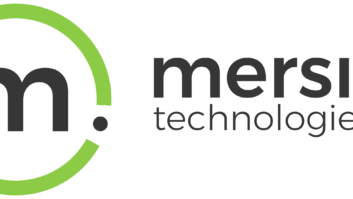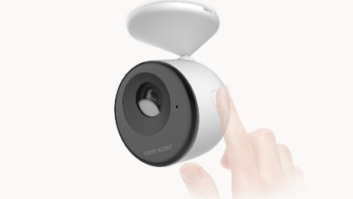It took longer to unfold than a “Lord of the Rings” movie, but the quest to launch digital AM and FM seems to be getting underway here at CES after last year’s false start.
At least three suppliers plan early-year shipments of HD Radio in the autosound aftermarket, and at least two suppliers plans home audio models late in the year, the suppliers told TWICE. For their part, select automakers are expected to offer HD Radio in a limited selection of vehicles late this year for the 2005 car model year.
Other companies are waiting until next year, when they expect HD Radio’s price premium to decline with the introduction of lower cost chipsets that will replace a first-generation DSP chip from Texas Instruments. One new chipset, a smaller size ASIC (application specific IC) planned by Philips, is due later this year.
At the consumer level, HD Radio’s current premium ranges up to $300 when HD Radio is built into a car CD-receiver, said supplier JVC. In relative terms, the premium is even higher at a time when Sirius Satellite Radio is giving away add-on satellite tuners during promotions, said Sanyo VP/sales and marketing Issac Levy.
Here at CES, dealers will be able to hear prototype autosound HD radios that incorporate the latest version of iBiquity’s HD Radio codec. The new codec, called HDC for HD Codec, enhances sound quality over the PAC codec that was scrapped last year after AM stations objected strenuously to the sound quality of PAC-format AM broadcasts.
Although the PAC flack delayed the digital AM/FM rollout, the results were worth it, AM broadcasters contend. Digital AM is “as good as or better than today’s analog FM,” said Milford Smith, chairman of the digital broadcasting subcommittee of the NRSC (National Radio Systems Committee.
The new codec also benefitted FM stations. Digital FM is now “statistically indistinguishable” in listening tests from CD sound quality, said Michael Bergman, Kenwood’s senior manager for digital broadcast products.
Like before, iBiquity’s HD Radio technology will eliminate FM multipath and other AM/FM-band interference that creates the familiar static, hiss, pops and fades associated with analog radio. The technology will also deliver associated text, including song title and artist name, as well as traffic data to a radio’s display. In the future, radio stations could use HD Radio to deliver a second audio program or matrixed surround sound (see stories on p. 44).
Limited early-year shipments of aftermarket car audio models from JVC, Kenwood, and Panasonic will be followed by limited automaker availability late in the year, when at least two home audio suppliers — Yamaha and Onkyo USA —plan to offer HD Radio in high-end home components, suppliers and iBiquity told TWICE.
While suppliers prepare for launch, broadcast stations are moving ahead again with HD Radio installations following a “little lull while everyone was waiting” for the resolution of last year’s codec conflict, said Smith. “I’m sensing a new enthusiasm and optimism on the part of broadcasters,” he said.
About 290 stations, mostly FM stations, have licensed iBiquity’s technology in 79 markets in 37 states, including all top 10 markets and 39 of the top 50 markets, said iBiquity president Robert Struble. Those stations reach 60 percent of the U.S. population, he said. Of those stations, about 100 have installed the necessary digital broadcast equipment to broadcast programs in both analog and digital forms.
Kenwood’s Bergman expects the majority of the 290 stations to be broadcasting digital signals in about six months, given financial incentives from iBiquity to get up and running as soon as possible. “The majority of them have ordered equipment,” he noted.
By the end of 2004, Struble said he expects about 600 to 650 stations covering 80 percent of the U.S. population to be broadcasting in analog and digital.
Although stations are going on line this year, many home and car audio suppliers say they’re holding off product shipments until next year because of initial limited consumer demand caused by the relatively high cost of the first generation of tuners. Some of these companies also reported a desire to focus on their satellite-radio launches rather than funnel resources toward launching a technology that must come down in price before the market takes off.
The first generation of car products includes Kenwood’s $399-suggested black-box tuner due in mid-January, a single-DIN Panasonic CD-receiver due in March at a suggested $999, and a single-DIN JVC CD-receiver due in March at $799 MAP. In JVC’s estimation, HD Radio added $300 to the consumer cost of its head unit, given that a like model lacking HD Radio will be MAP priced at $499.
Because of the premium, Struble pegged unit sales in the “tens of thousands” in 2004, mainly to early adopters.
Eventually, however, suppliers agreed that mass adoption is in store. “Satellite radio has raised consumers’ minimum standards,” said Eric Harper, product manager for Onkyo USA’s Integra and Integra Research brands. Terrestrial radio “is the one last analog source” in audio.
“We’re committed to it,” said Alpine VP Steve Witt.
Other companies will demonstrate HD Radio at the show even if their plans call for shipments in 2005. Aftermarket autosound supplier Sanyo, for example, will demonstrate a single-DIN CD-receiver that it might ship late in the year or in early 2005. Aftermarket supplier Alpine will also demonstrate a car model but at press time wasn’t sure whether it will ship in 2004 or 2005.
OEM suppliers Delphi and Visteon will also demonstrate car models, as they did at last year’s show, and their models could turn up in 2005-model-year cars due in the fall. “Automakers are likely to begin offering HD Radio to consumers in 2004,” said a Delphi spokeswoman.
The Visteon and Delphi radios “are ready to go” said Struble. “Automakers are asking for quotes already, so we expect some car platforms late in calendar 2004, and the OEM uptake will hit in calendar 2005.”
Major home audio suppliers had no plans to demonstrate home HD Radio at the show, but Yamaha said it plans late-year shipments of a high-end home theater receiver with integrated HD Radio.
For its part, Onkyo USA is targeting October availability of HD Radio tuner cards that consumers can slide into the backs of a pair of high-end modular receivers under the Onkyo and Integra brands and in a preamp/processor under the Integra Research brand.
Harman Kardon, meantime, will show multiple home receivers with slots for adding HD Radio modules as a running change if it so chooses.
To support HD Radio’s launch, iBiquity will bring retailers and suppliers together early on to coordinate launches in select major markets where a “good number” of stations are broadcasting in digital, Struble said. Additional details weren’t announced.
While broadcasters and suppliers roll out the technology, iBiquity is taking steps that will enable the FCC to enact final rules for implementing terrestrial digital radio. Struble, however, described those steps as “administrative procedures” and that the “break-dam” event was the October 2002 FCC approval of iBiquity’s hybrid analog/digital system on an interim basis.
The administrative procedures include the NRSC’s effort to write a formal HD Radio-based standard that would be sent to the FCC for adoption.
Smith of the NRSC agreed with Struble. “Standardization is the formalization of system design, which is pretty much locked down,” he said. The FCC will then use the standard to write permanent rules for operating digital AM and FM stations, but that process “will just be a formal recognition of the service and a quantification of the technical parameters to operate under. Those will be virtually identical to the interim rules,” he said.
Smith said he hopes the NRSC would be able to adopt the standard in the first quarter. As part of that process, subjective listening tests to document the performance of the new HD Radio codec must also be completed.
Smith said he hopes that results of the listening tests, overseen by the NRSC, will be completed this month or February. “The expectation is that everything should be fine,” given numerous demonstrations staged by iBiquity for broadcasters and suppliers, he said.
Here are the details on various suppliers’ HD Radio plans:
Alpine: The company will demonstrate a model at CES but at press time wasn’t sure if the centerpiece of its demo would be an outboard tuner or integrated CD-receiver. The company also wasn’t sure whether it would ship the outboard tuner in 2004 or wait until 2005 to offer the CD-receiver version.
Audiovox: The company has no plans for home or car in 2004.
Delphi: The automaker supplier will demonstrate real-time traffic-data services on the text display of a fully functional car audio head unit, a spokeswoman said. In addition, the radio will also display song title and song artist information.
Denon: Neither satellite or HD Radio will be offered in 2004, but “there’s room for both in the home,” said president Steven Baker.
JVC: The company will demonstrate am HD-equipped CD-receiver shipping in March at $799 MAP. Besides receiving digital AM and FM broadcasts, it will also digitally process analog AM and FM signals to improve sound quality and reduce interference. The head unit can also control an outboard Sirius Satellite Radio tuner.
Home HD Radio isn’t planned for 2004.
Kenwood: The company will take orders for a $399-suggested black-box tuner due in mid-January for connection to eight 2003-model-year HD Radio-ready head units, 15 new 2004-model-year HD Radio-ready heads, and Sirius Satellite Radio-ready head units going back to 2002. This year’s HD Radio-ready heads start at a suggested $200, down from last year’s $320 opening price. HD Ready heads, the company noted, can support the simultaneous use of an outboard HD tuner and outboard Sirius tuner. The two digital radio technologies,” said Michael Bergman, Kenwood’s senior manager for digital broadcast products, “are very complementary.”
In addition, the company will demonstrate a single-DIN CD-receiver incorporating HD Radio and Sirius tuner in working prototype form. It’s “coming soon,” Bergman said.
Although the company had previously mentioned plans to offer a home unit in the first quarter, it won’t show a model at CES but will offer one at an unannounced date.
Onkyo USA: HD Radio tuner cards are planned for October availability for use in two high-end receivers being launched here under the Onkyo and Integra brands and in an Integra Research brand preamp/processor. Consumers will be able to install the cards into the back panels of the components, which feature a modular design enabling consumers or dealers to add the features they want.
The components and the first set of cards ship in April. The $4,000-suggested preamp/processor will ship with only analog and digital-input cards. Optional cards are an analog AM/FM card, video processor and switching cards, iLink input 7.1-channel input, and NetTune card for an Ethernet connection to a music server.
The $3,500 Intergra receiver will ship with included analog AM/FM, analog and digital input, and videoswitching cards. The $4,000 Onkyo receiver will ship with all available cards, with the HD Radio card eventually included as a running change.
Home satellite radio cards aren’t likely to be available in 2004, said Eric Harper, product manager.
Panasonic: Although it has no plans for home HD Radio in 2004, the company plans March shipments of a $999-suggested single-DIN CQ-CB9900U CD-receiver with integrated HD Radio tuner. It also incorporates DSP to clean up analog AM and FM to produce less distortion, multipath noise and pulse noise. Other features include MP3/WMA-CD playback.
Pioneer: The company has no plans to offer HD Radio for the home or car in calendar 2004, said senior VP Mike Townsen. “Our product planning teams here in U.S. and Japan are continuing to study this technology and market,” and “future introductions are under study.” Meantime, “Pioneer has focused on the commercial SDAR market in the U.S.”
Sanyo: A prototype single-DIN CD-receiver for the car will be demonstrated and will ship either in the fourth quarter of 2004 or the first quarter of 2005. The company is focusing on the launch of its first Sirius tuner for the car at the show.
Sony: No plans for home or car in 2004.
Yamaha: A home receiver with integrated HD Radio will be launched in late 2004, but it won’t be shown at CES.













